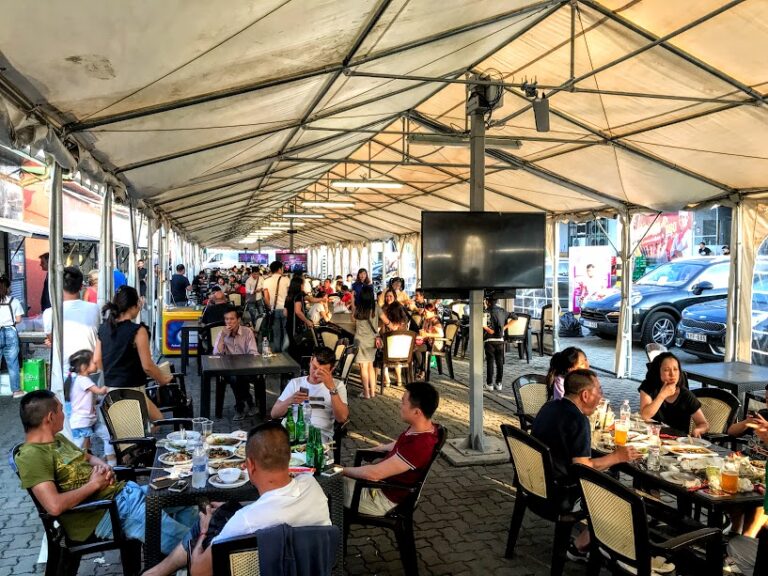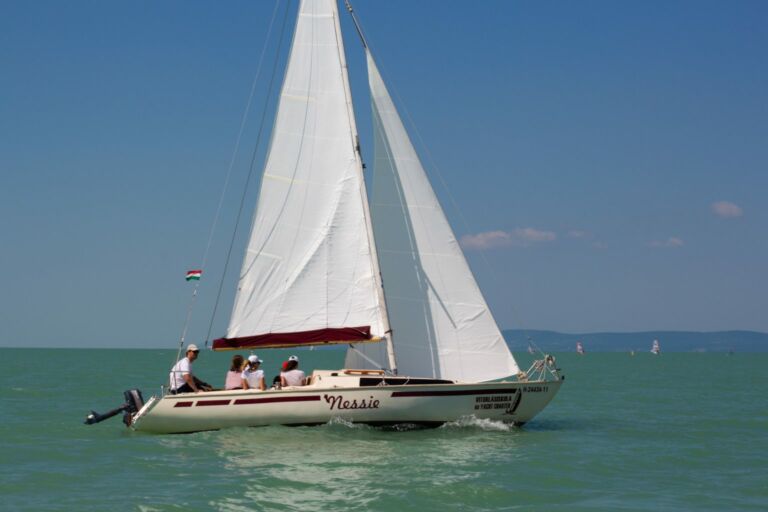Fisherman’s Bastion – one of the most beautiful sights in Budapest
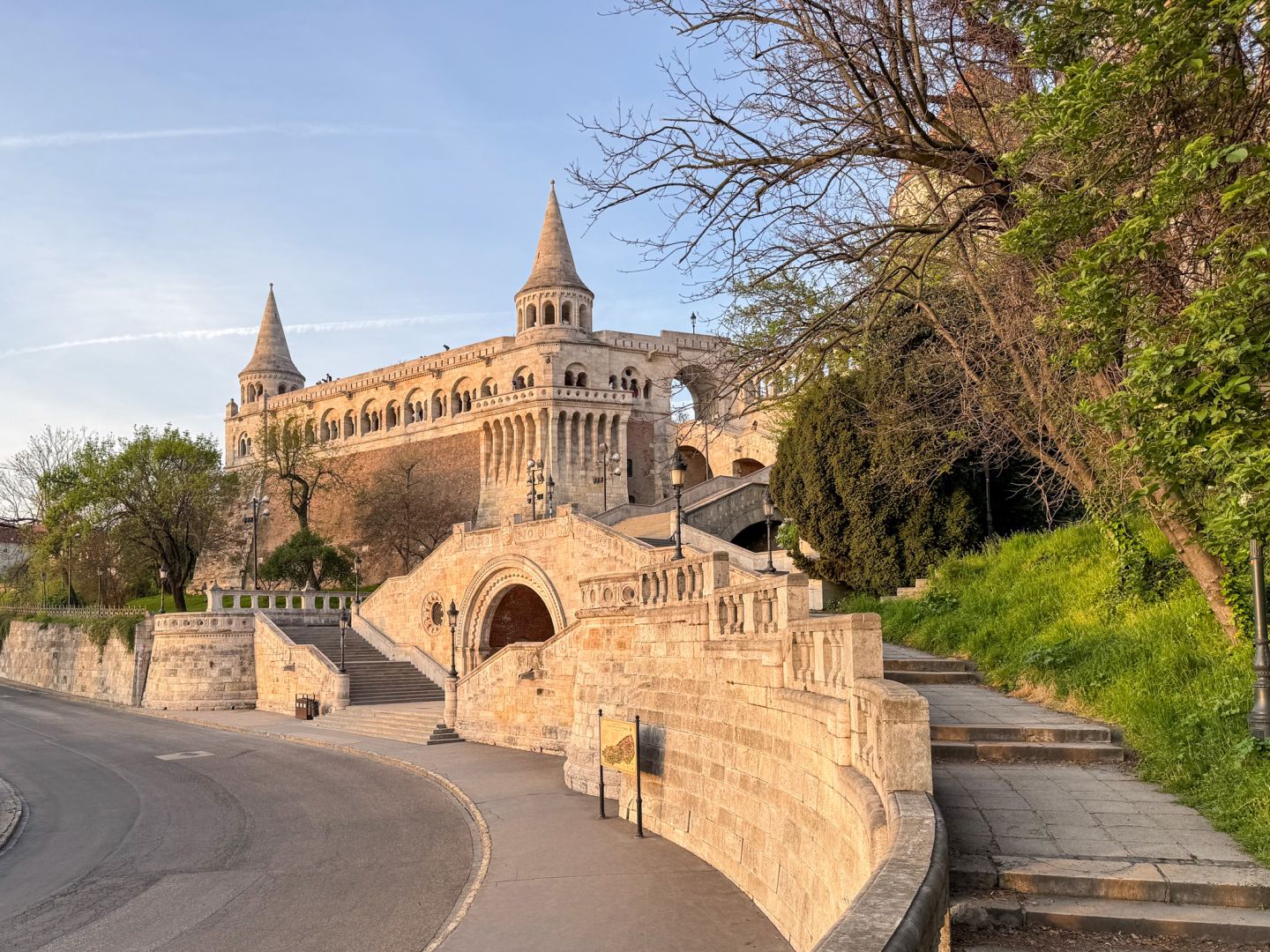
Fisherman’s Bastion – one of the most beautiful sights in Budapest
The Fisherman’s Bastion, known as “Halászbástya” in Hungarian, is one of Budapest’s most iconic landmarks, offering panoramic views of the Danube River, Margaret Island, and Pest. Located in the Buda Castle district, the structure is a blend of neo-Gothic and neo-Romanesque architectural styles. Its history is as fascinating as its appearance, rooted in the cultural and political transformations of Hungary.
Fisherman’s Bastion is one of the most visited tourist attractions in the castle. It offers a stunning panorama of Pest and is an ideal spot to watch the sunrise.
Fisherman’s Bastion tickets
Regarding entry fees, the situation is a bit nuanced.
Free Access
The lower terraces of the Bastion are free to access throughout the year. Visitors can enjoy a significant portion of the panoramic views and explore much of the structure without any charge.
Paid Access
Access to the upper terraces, which offer even better views of the city, is subject to an entrance fee. This fee helps maintain the site and supports its preservation. The upper terraces are accessible for free only during the early morning hours (before 9 am) and in the evening (after 8 pm) during the summer months. However, exact times and policies might vary, so it’s good to check for the latest information before visiting.
Ticket Prices
The ticket prices for the upper terraces are usually modest. Discounts are available for students, seniors, and groups. Children under a certain age may also enter for free or at a reduced rate.
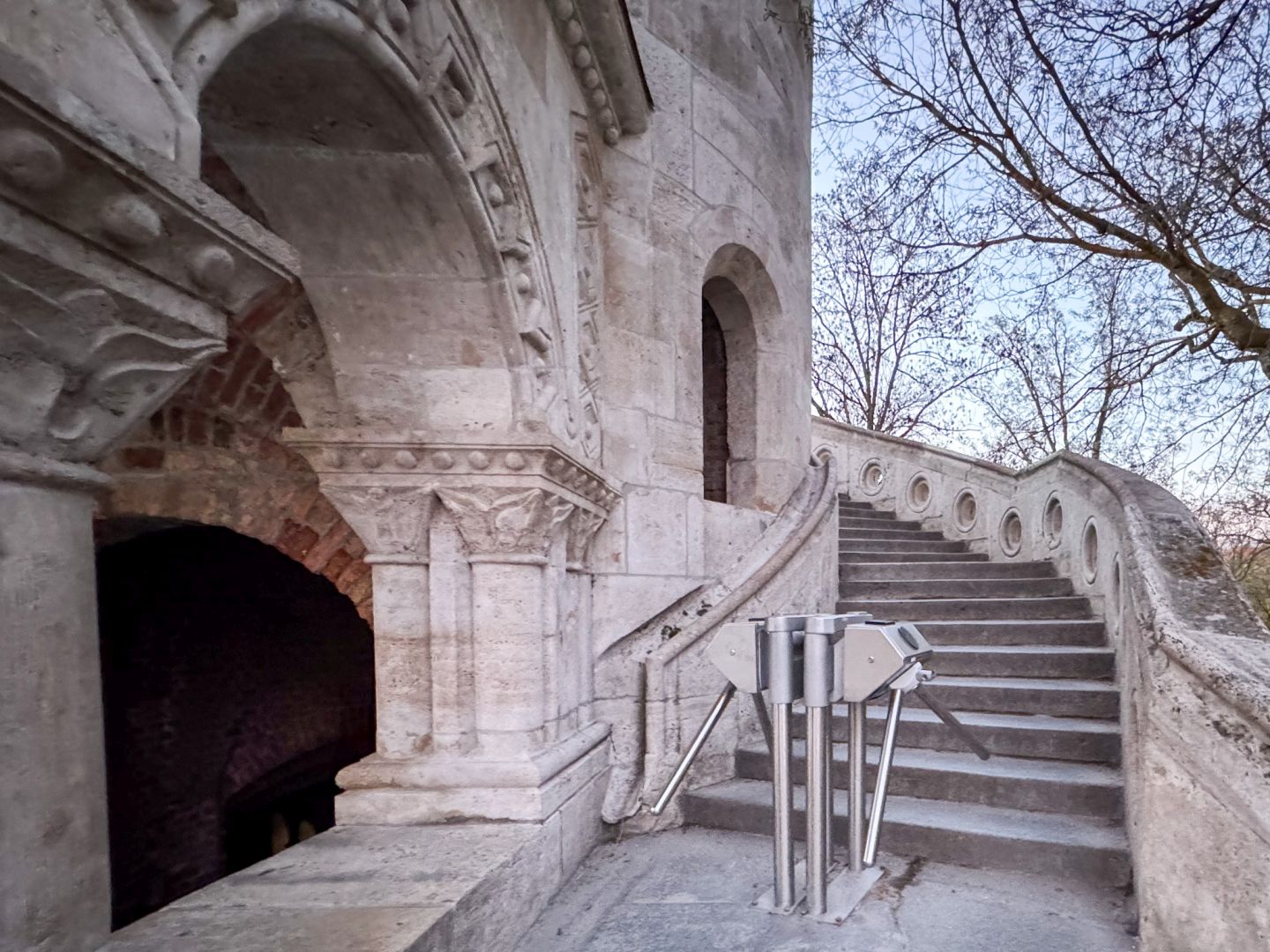
Fisherman’s Bastion opening hours – the lower terraces
The lower terraces of the Bastion are accessible at all times, allowing visitors to enjoy the views and the architecture day and night without any restrictions.
It’s worth checking the sunrise times and securing the perfect spot at the edge of the bastion half an hour earlier!
Fisherman’s Bastion parking
When planning a visit to the Bastion in Budapest, parking can be an important consideration. Here are the details regarding parking options:
On-Site and Nearby Parking Options
Buda Castle District Parking
- Near the Buda Castle, various parking lots are available.
- The Buda Castle district, where the Bastion is located, has several designated parking areas. These are often within walking distance of the Bastion.
- Parking in this area is generally paid, with hourly rates that vary depending on the specific location and season. Expect higher rates during peak tourist seasons.
Várkert Bazár Parking Garage
- Ybl Miklós tér 4, 1013 Budapest, Hungary.
- This parking garage is located near the Várkert Bazár, at the foot of the Castle Hill. It offers a substantial number of parking spaces.
- The garage charges hourly rates, which are typically reasonable and provide a convenient parking option.
Street Parking
- Limited street parking is available in the vicinity of the Buda Castle district.
- Street parking is usually metered and may have time restrictions. Pay attention to parking signs to avoid fines.
What is the nearest metro station to Fisherman’s Bastion?
The nearest metro station to the Fisherman’s Bastion is Batthyány tér on Line M2 (the red line) of the Budapest Metro.
Fisherman’s Bastion at night and sunrise
The Fisherman’s Bastion is particularly enchanting at night, when its turrets and arches are beautifully illuminated, casting a magical glow over the Buda Castle district. At sunrise, the Bastion offers a serene and breathtaking view of Budapest as the city awakens, with the first light of day reflecting off the Danube River. These times provide a tranquil and picturesque experience, perfect for capturing stunning photographs and enjoying the peaceful ambiance.
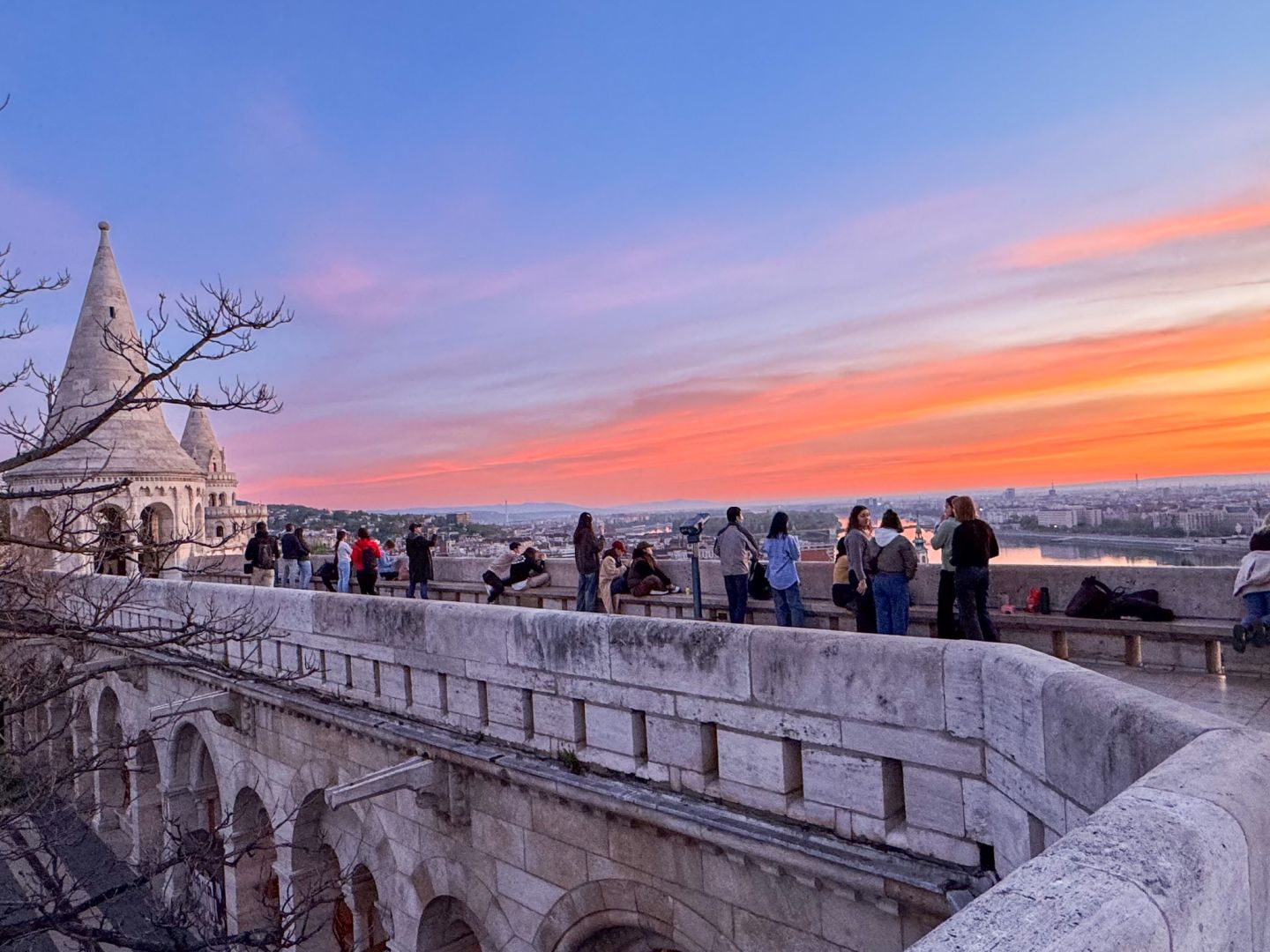
Fisherman Bastion history
The site where the Fisherman’s Bastion stands today has a rich history dating back to the Middle Ages. The Buda Castle hill has been a strategic military and administrative center since the 13th century. The hill was fortified by King Béla IV after the Mongol invasion of 1241-42, and it became a significant part of the medieval city of Buda.
The current Bastion was constructed between 1895 and 1902, designed by Frigyes Schulek, a prominent Hungarian architect. Schulek’s design aimed to restore and beautify the ancient defensive walls, which had fallen into disrepair. His vision was to create a structure that not only served a defensive purpose but also provided an aesthetic enhancement to the cityscape. The Bastion was built in a neo-Gothic and neo-Romanesque style, reflecting the romantic architectural trends of the era.
Fisherman’s Bastion was constructed to commemorate the 1000th anniversary of the Magyar conquest of Hungary, not for defensive purposes. It was designed partly to frame the centuries-old Matthias Church beautifully, and partly to create a viewing terrace from which everyone could admire how beautifully Pest, across the Danube, had developed by the time of the millennium celebration.
Fisherman’s Bastion was built on the site of the old castle walls, and it got its name because this part of the wall was historically protected by the fishermen’s guild during sieges, with a fish market operating at the foot of the hill. Another theory suggests that the bastion was named in honor of the fishermen who lived in the area and provided fresh fish to the residents of Buda. The seven towers of the bastion symbolize the seven chieftains of the Magyars.
Indeed, the view from Fisherman’s Bastion towards Pest is breathtaking.
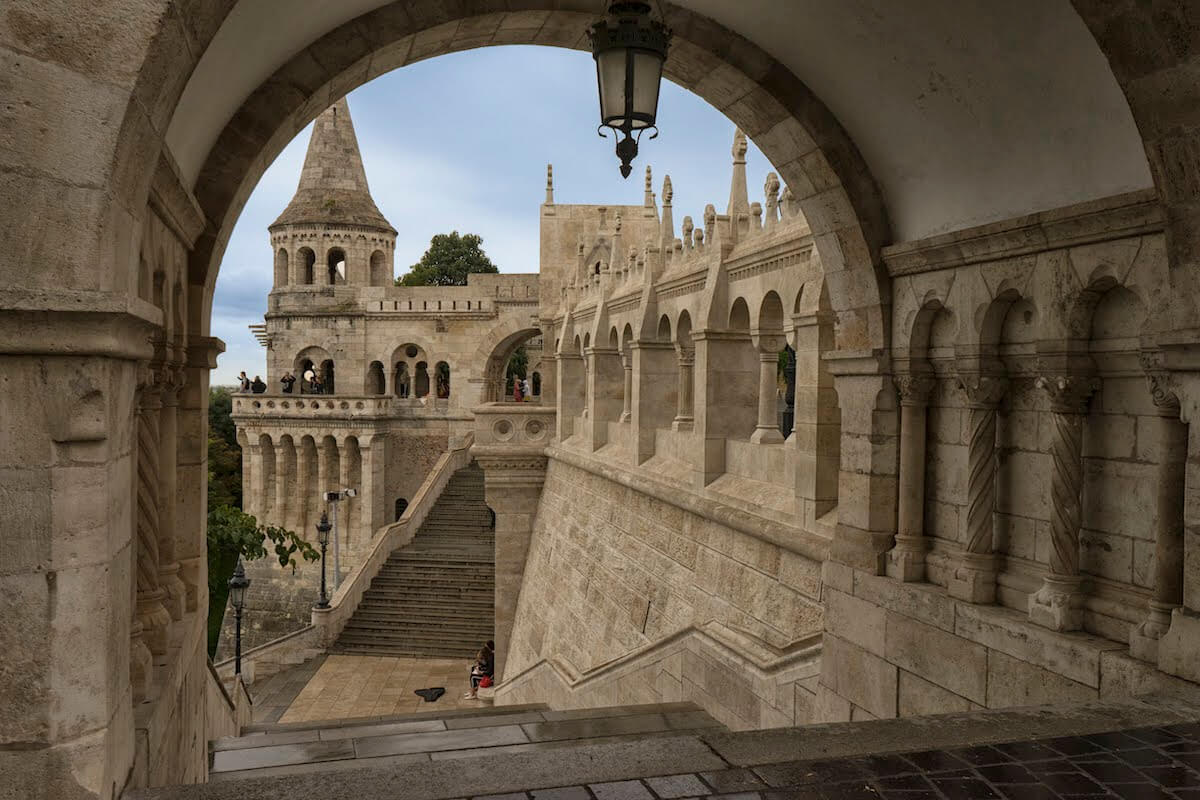
Architectural features
The Bastion consists of seven towers, each symbolizing one of the seven Magyar tribes that settled in the Carpathian Basin in 895. These towers are connected by arcades and parapets, forming a picturesque promenade along the edge of the hill.
The structure includes several staircases, courtyards, and terraces. The Bastion’s white stone, decorative turrets, and arches give it a fairy-tale-like appearance. One of the most notable features is the statue of Stephen I, the first King of Hungary, mounted on a horse. This statue, created by sculptor Alajos Stróbl, stands prominently in front of the Bastion, symbolizing Hungary’s founding monarch.
Why is Fisherman’s Bastion famous?
Historical Significance
The Bastion has witnessed numerous historical events over the past century. During World War II, the structure suffered significant damage due to bombings and the siege of Budapest. However, it was meticulously restored by Frigyes Schulek’s son, János Schulek, who followed his father’s original designs.
Modern era and tourism
Today, the Fisherman’s Bastion is one of Budapest’s top tourist attractions. It offers stunning views of the city, including the Hungarian Parliament Building and the Chain Bridge. The Bastion’s terraces provide an ideal spot for visitors to take in the beauty of Budapest, especially at sunrise and sunset.
The site also includes a café and a chapel, adding to its charm. The nearby Matthias Church, another architectural gem designed by Frigyes Schulek, complements the Bastion’s historic ambiance. Together, these structures form a significant cultural and architectural ensemble in the Buda Castle district.
Cultural and symbolic impact
The Bastion symbolizes Hungary’s rich history and cultural heritage. It reflects the country’s medieval past, the romanticism of the 19th century, and the resilience of the Hungarian people. Its blend of historical and architectural elements makes it a beloved landmark for both locals and tourists.
In conclusion, the Bastion is not just an architectural marvel but a testament to Budapest’s enduring spirit. Its history, from medieval times to its present-day status as a UNESCO World Heritage Site, captures the essence of Hungary’s national identity and historical journey.
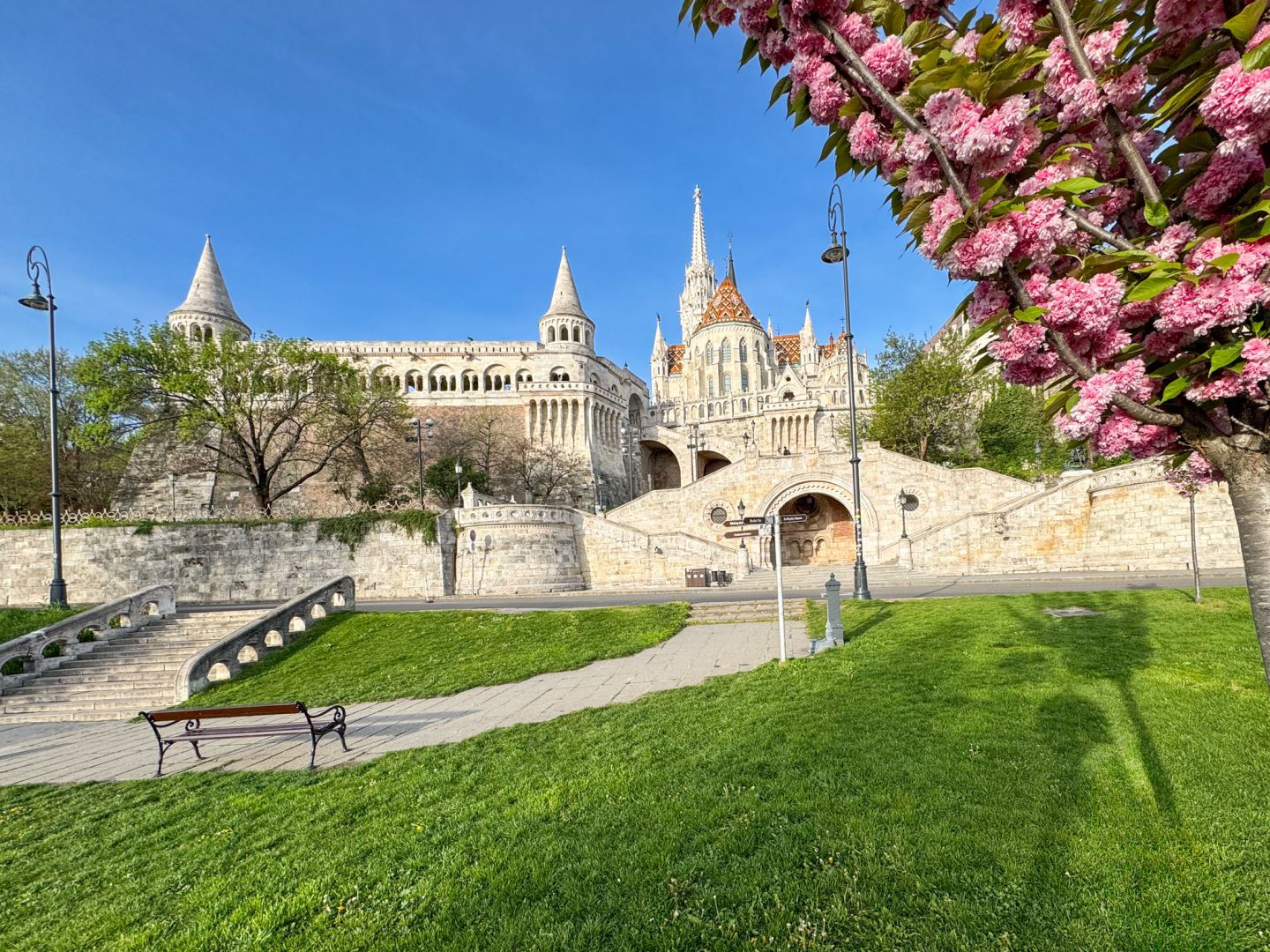
How long to spend at Fisherman’s Bastion?
The amount of time you should spend at the Bastion can vary based on your interests and schedule. For a quick visit, you might spend about 30 minutes to an hour, allowing you to enjoy the panoramic views and take some photos. A standard visit, which includes exploring both the lower and upper terraces and visiting Matthias Church, typically takes about one to two hours. If you want a more in-depth experience, including a leisurely exploration of the entire structure, a café break, and detailed photography, you could spend two to three hours or more.
Bonus: Fisherman’s Bastion wedding? Yes!
The Bastion is a popular and picturesque location for weddings, offering a fairy-tale setting with its neo-Gothic and neo-Romanesque architecture. Couples can exchange vows against the backdrop of stunning panoramic views of Budapest, including the Danube River and the iconic Parliament Building. The romantic ambiance and historic charm make it an ideal venue for both ceremonies and wedding photos, creating unforgettable memories for the bride, groom, and their guests.
So, don’t hesitate: if you want an unforgettable experience and beautiful wedding pictures that will be a joy to look at for years to come, you already know the best place to have your wedding in Budapest.
